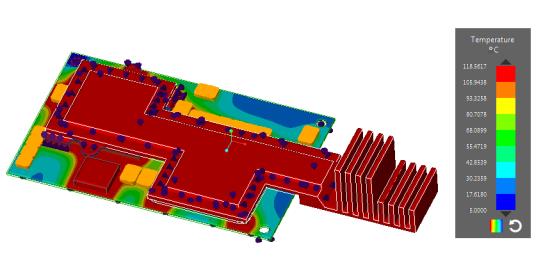Example: Thermal Simulation
The following example demonstrates how use you can use live simulation to study the effects of heat loads on a printed circuit board (PCB).
Heat loads are applied to the different groups of integrated circuits on the PCB. Boundary conditions are defined for the heat shield and one of the corner holes of the PCB.
1. Heat Flow Load 1—10,000 mW
2. Heat Flow Load 2—500 mW
3. Heat Flow Load 3—50mW
4. Heat Flow Load 4—7500mW
5. Boundary Condition 1—A convection coefficient of 0.01 mW/mm2 C applied to the heat shield with an ambient temperature of 25 degree C
6. Boundary Condition 2—A prescribed temperature of 5 degree C applied to the corner hole of the PCB
Note that result values change depending on the setting of Simulation Quality. In this example the Simulation Quality slider has a maximum (100%) value of accuracy.
When you click
 Simulate
Simulate the temperature results for the PCB are displayed as a fringe plot on the model, in the graphics window. In this example the maximum temperature is 126 degree C.
Click Display Options > Result Options. Select Show Min/Max to view the location on the PCB with the maximum and minimum temperature values.
1. Minimum temperature represented by a blue circle
2. Maximum temperature represented by a red circle
To reduce the overall temperature of the model you can modify the design. In the following figure the shape of the fins of the heat shield has been changed and the height of the first four fins has been increased for improved heat dissipation.
1. Modified fin shape and height of the heat shield
Click
 Simulate
Simulate , to view the temperature results for the simulation. The overall temperature is now 118 degree C.
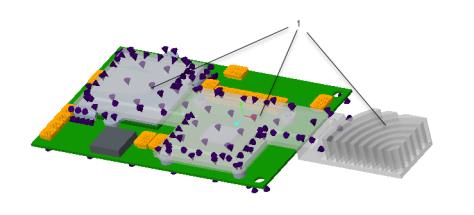

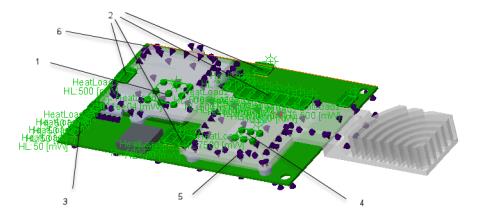
 Simulate the temperature results for the PCB are displayed as a fringe plot on the model, in the graphics window. In this example the maximum temperature is 126 degree C.
Simulate the temperature results for the PCB are displayed as a fringe plot on the model, in the graphics window. In this example the maximum temperature is 126 degree C.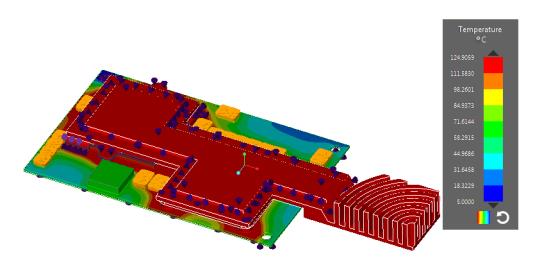
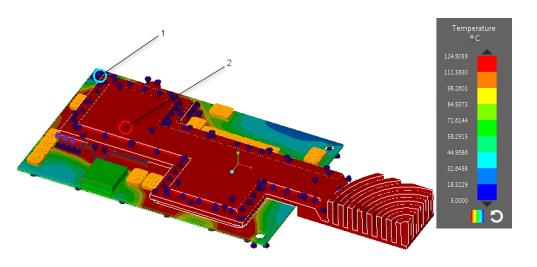
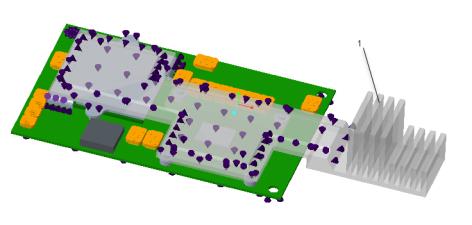
 Simulate , to view the temperature results for the simulation. The overall temperature is now 118 degree C.
Simulate , to view the temperature results for the simulation. The overall temperature is now 118 degree C.